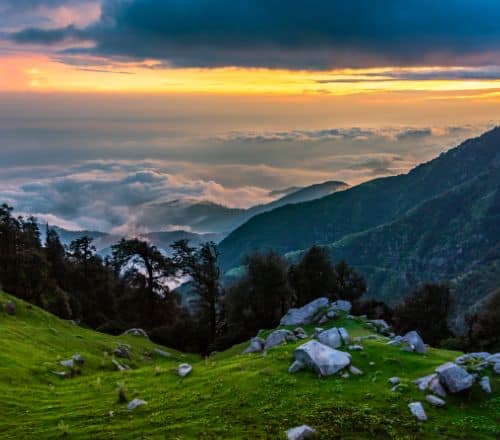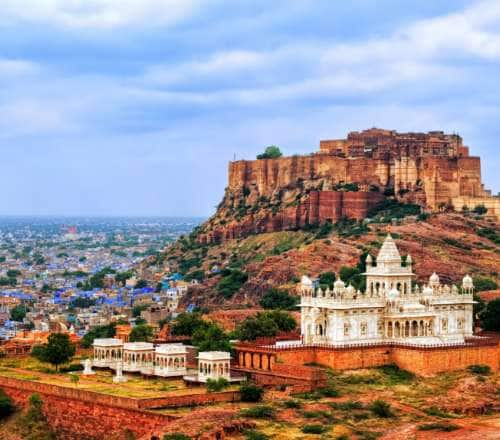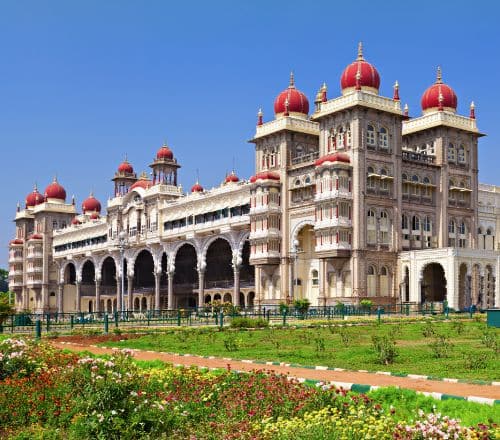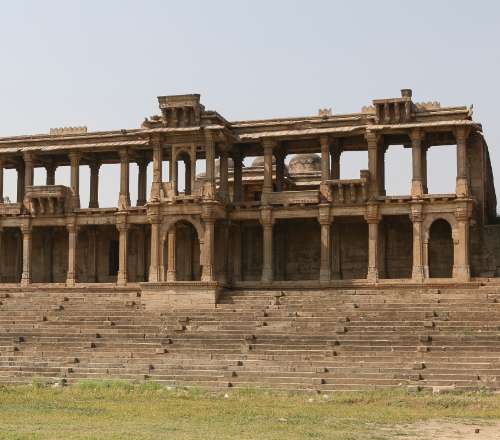Stay logged in to proceed with bookings, orders and offers.
On changing the terminal, you will loose items in your cart. Are you sure you want to change your terminal?
Planning a date with the big cat in the wild? Pench National Park will not disappoint you.
It took a call on my forest guide’s mobile phone to mark my date with a tiger and restore my faith in Indian wildlife. I can unabashedly say that I’m guilty of being "that" kind of tourist who wants to spot at least one big cat when out on a wildlife safari. Having experienced the African safari and seen the rich wildlife it offers, I looked forward to hopping on board an Indian wildlife safari.
My choice for the safari was Pench National Park. This park is located on the border of Maharashtra and Madhya Pradesh and is spread across the districts of Seoni and Chhindwara. The park is named after the sparkling Pench river that flows through the park. Established as a sanctuary in 1965, Pench is home to a diversity of animal species, such as leopards, deer, chinkara, hyena, porcupine, fox, wild boars, and many more. It is also a paradise for bird watchers, with over 200 species of resident and migratory birds, including the kingfisher, minivet, Indian roller, and racket-tailed drongo among others. In 1975, the forest was recognised as a national park and, in 1992, a tiger reserve.
The park is spread over 758 sq km and is mainly dotted with teak trees, interspersed with white Kulu trees (also known as "ghost trees" because of their eerie look). Considering that Pench provides a natural habitat for a diversity of wildlife, it is no surprise that Rudyard Kipling chose to tell his story of Mowgli from The Jungle Book using this national park as his inspiration. This recognition aside, the most famous star of the park is undoubtedly the elusive Bengal Tiger. And the sighting of this majestic cat is always a treat for the eyes.
At the break of dawn, I slipped into my camouflage pants and a black t-shirt as well as put on a cap and a lot of sunscreen. I tried to have a king’s breakfast before the game drive but the excitement of going on a safari allowed me to have only a lean breakfast of bananas. Upon reaching the office of the Forest Ranger, my identity was verified and I was assigned an open jeep for the safari.
Game drives in national parks are usually led by trained and experienced guides who are well-versed in the movements of wild animals in the forest. I was given a disclaimer early on that even the best guides in the world cannot guarantee a big cat sighting in the wild. I needed some patience, good observation, and a lot of luck to be awarded a sighting of a tiger in its natural habitat.
The park authorities also shared some guidelines to be followed during the safari. These included not stepping out of the jeep and listening to the guide and driver at all times. The designated route of the safari ride is fixed; there are different entry zones for tourists. The park has seven zones: Jamtara, Turia, Karmajhiri, Rukhad, Sillari, Khursapar, and Wolf Sanctuary. Of these, Turia is the more popular zone as it is known for tiger sightings because of the numerous watering holes in this stretch. Remember that each zone has a per-day carrying capacity.
After the briefing, we embarked on our wildlife expedition. As we drove into the forest, I was transported into a different world. It felt like we were listening to nature's symphony, with birds chirruping, trees swaying in the wind, leaves rustling, monkeys giggling, wild dogs howling, and big cats growling. The quality of the air you breathe in the wild is much better as the forest acts as a natural filter.
While on the safari, I spotted a hefty black gaur grazing in the forest; a herd of sambar crossing the road; and a group of grey langurs basking in the sun. We stopped at a few watering holes in hopes to witness a big cat quenching its thirst. But despite driving through the dry forest for over an hour, we did not spot a tiger.
Just when I was cursing my luck and losing hope of sighting the striped big cat, we got a call informing us about a tiger having been spotted by another guide in the forest. Soon, my driver was speeding in the direction of the spot, where the sighting had taken place, with a mission to prove why Pench National Park is one of India’s best places to spot tigers!
When we reached the place where the tiger was seen freely roaming about, we saw a cluster of jeeps ahead of us. News travels fast in the jungle and we had to manoeuvre our way through a maze of jeeps surrounding a single tiger. With its striped coat glowing in the light of the dawn, the tiger looked surprisingly uninhibited by all the attention of prying tourists. It was busy scratching the bark of a tree and occasionally scent-marking it. The nocturnal animal leads a solitary life which explains its need to mark its territory through these seemingly odd and odorous activities.
Here, I have to admit that I wished to have an encounter with the tiger without so many people around, thereby making it a more intimate sighting. But I had to make peace with my fellow travellers and optimise every opportunity to stick my neck high to see the tiger. The orange-and-black striped cat was a real beauty to watch. The tiger continued to walk nonchalantly while we trailed it for about 15 minutes and soon it disappeared into the forest.
At peace after spotting a tiger, I was now ready to appreciate the natural beauty of Pench National Park. The forest is an untamed terrain, with undulating hills, grasslands, and meadows. We drove through a thickly forested area to emerge into an area with low, grassy hills. This landscape was a contrast from the earlier route, somewhat reminding me of the landscape I'd seen in Africa. The air was exceptionally fresh and rejuvenating. We parked at a scenic spot to grab a quick bite. However, our appetite for wildlife wasn't yet sated and soon we headed back on the trail for some more wildlife-watching.
As we drove back to the starting point along the safari trail, my guide spotted some paw marks on the red soil. My eager and excited eyes lit up on seeing these paw marks – was I finally going to get my intimate encounter with a tiger? Even as I was lost in my thoughts, I heard my guide receive a message on the transmission device and soon we were speeding along a new route. However, the adventure ended in disappointment as we were unable to spot another tiger.
We continued to trundle along the trail, soaking up the golden sunshine, and made a short stopover on the way to admire the sight of a dancing peacock. As I watched the peacock's colourful feathers and extravagant movements in amazement, I realised that I'd indeed been lucky with the game drive at Pench. I may have been mildly disappointed about missing another sighting of a tiger, but being in the wild did not disappoint me!
How to reach: If you plan to travel to Pench National Park by air, the nearest major airports are Dr Babasaheb Ambedkar International Airport in Nagpur and Jabalpur Airport. Taxis are available from the airports to the national park. From Nagpur Airport, it takes approximately 2 hours, while from Jabalpur Airport it takes around 4.5 hours to reach the national park.
How to book: Pench Safari Booking is managed by the forest departments of Maharashtra and Madhya Pradesh. Therefore, it is advisable to book the safari ride online well in advance.
Safari timings: Pench National Park remains open from October till the end of June. It remains closed during the monsoon season which lasts from July to September. The park is open for a visit from 6.00 am to 10.30 am and from 3.00 pm to 6.00 pm.





The Adani One expressly disclaims all liability, direct and indirect, in respect to actions taken or not taken based on any or all the contents of this Blog. The Blog is an opinion of the contributor based on the collation of data from various sources and is provided only for information purpose. Adani One does not canvass, advertise, solicit, invite or induct for any product, merchandise, information, brand or any other materials mentioned in the Blog, nor does it obtain any monetary benefit from the same. Reader is advised to read and apply his/her intellect and discretion in this regard. Any Intellectual Property mentioned in this blog belongs to the rightful owner. We do not intent to claim any interest over the same.